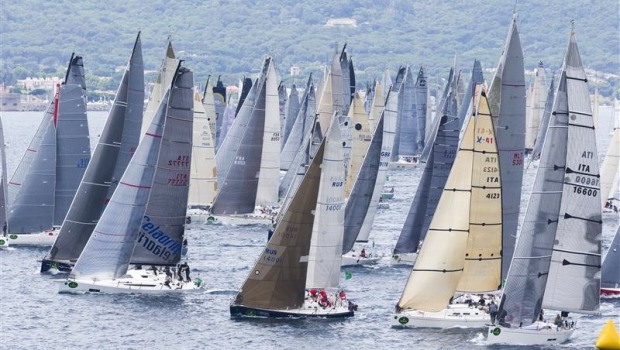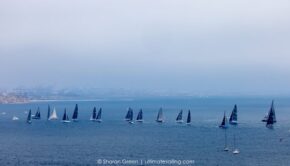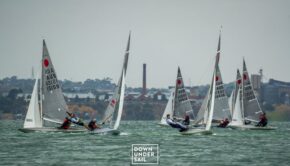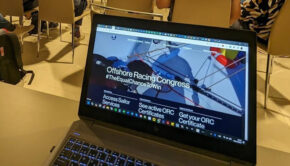Decreasing the hassles of handicap racing
Published on October 6th, 2014
The history of yacht racing has seen numerous rating rules, each seeking to fulfill the goal of accurately determining boat performance through measurement and calculation. However, different rules are appropriate for different levels of competition, different rules are used in different regions of the world, and rules come and go as technology improves.
And for each rating rule, boats had to be specifically re-measured to its criteria, imposing costs and hassles for boat owners.
In today’s landscape, it is now accepted that one handicap rule will not work for the entire sport. The problem is that for different levels of racing, different methods of calculating ratings are necessary. But there is no reason why boats need to be measured multiple times.
Since “One-World-One-Rule” isn’t a feasible objective, an initiative for there to be “One-World-One-Measurement System” is the action item being coordinated by handicap rule administrators.
As a means to eliminate the need to re-measure boats for different rating rules, the Universal Measurement System (UMS) is rapidly gaining momentum worldwide. The major partners in the development of the UMS are the RORC, the ORC, and US Sailing, who run the three largest rating offices in the world.
Stan Honey, who is chairman of the ISAF UMS Working Party, provides an update…
For some aspects of a boat and its gear and sails, the various rating systems today use slightly different measurements. The way the UMS accommodates that is to have the UMS measurements be a superset of the measurements needed for the primary rating rules used today around the world, IRC, ORC, ORR, and HPR .
The fact that the UMS includes more measurements than any one rule does make a UMS measurement slightly more expensive than measuring a boat for just one rule. But the primary expense in measuring a boat is the cost for the measurer’s time and travel and the cost and hassle for the owner and his employees getting the boat into measurement trim and to a yard in a configuration ready for measurement. Once a boat is prepared for measurement and the measurer is there, it is relatively cheap to measure certain things in two different ways to get the superset of measurements included in the UMS. A UMS measurement provides the owner with fabulously cheap insurance against having to re-measure the boat entirely if the decision in the future to race in another region or try a race under a different rating rule. If the measurer is there, and the boats is prepared, it is relatively cheap to make more measurements.
There is an interesting dynamic occurring, however. By having the UMS include a superset of all the different measurements, the various rating systems are seeing what measurements the other rating systems use, and some of the particular measurements used are starting to coalesce.
For example, in the past, to be measured for IRC a boat would have to be in “light boat” trim, which basically meant that anything that would fall out of a boat if you picked it up, turned it over, and shook it, could not be onboard for measurement. Other rules used a different configuration for measurement where certain equipment was left on board for measurement. Now, in part as a result of the joint UMS development, all three major rule developers have decided to all use light boat trim for measurement. It is easier and it is more easily defined.
The same thing may happen with sail dimensions. It is not hard to make multiple measurements once the sail is on the floor, but a common consensus might someday emerge on the most sensible measurements.
The key to getting UMS launched is not to wait for all the particular measurements to coalesce. Instead, we are starting with the UMS capturing the superset of all measurements, and then if the dynamics coalesce the measurements, that’s great, but even if they don’t, there is still a huge savings by taking the measurements for all the rules at one time with one measurer visit, rather than multiple complete re-measurements.
The credit for the initial idea of UMS goes to Mike Irwin of IRC. Mike was the one that saw that we needed to solve this problem. The previous situation had been making life unnecessarily difficult for owners.
In the United States, there are several rating rules in use, and their popularity varies between regions. The UMS gives any event the opportunity to try different rules – to dual score events – to see how well rules work, without adding additional cost or hassle for the owners.
I can also see UMS enabling future rating rule development. If there comes a time when a new rating rule is proposed, the authors will be under enormous pressure to use just the measurements that are already available within the UMS. It would be very easy to test a new rating system because ratings could be easily calculated for every boat that has a UMS measurement.
Understandably, the most strenuous advocates of the UMS are the owners. The rule makers actually have a perverse incentive to make it difficult and expensive for an owner to try racing under a different rule. The owners have the most to gain from the success of the UMS. Mike Irwin imagines a future where new boats are delivered with a thumb drive of data. Those are the boat’s measurements and all you do is add the measurements from sails as you buy them and the boat never has to get re-measured to race under any rule, anywhere in the world.









 We’ll keep your information safe.
We’ll keep your information safe.